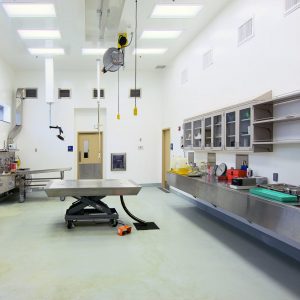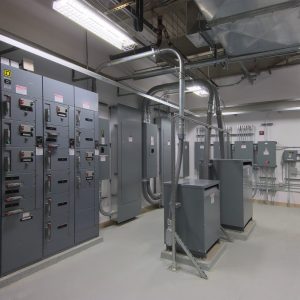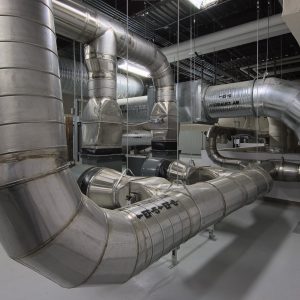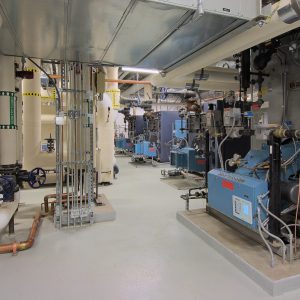Biological Research and Diagnostics Facility
RESPEC provided full-service engineering design, including civil, electrical, mechanical, and structural services, for the 30,000-square-foot, state-of-the-art, biological research and diagnostic facility at the University of Alaska Fairbanks (UAF). The facility provides central support for campus animal-research activities and includes research-animal holding and procedural functions; surgical, necropsy, waste-handling, and laboratory functions; and administrative and teaching space.
The gravity load-resisting system consists of steel beams and columns with composite metal deck and concrete floors. The need for maximum flexibility dictated modular spatial arrangements for the bay spacing and column/beam sizes. Seismic loads governed the design of the primary systems, and wind loads guided the design of secondary structural elements such as exterior wall studs, curtain walls, and an incinerator stack. Steel-braced frames were chosen for the lateral load-resisting system.
The civil and structural design followed an early site/structural design package that was developed with input from the steel detailers to enhance the building schedule with early provisioning. Close coordination was required among the various design disciplines to incorporate building elements that were not fully designed. An interstitial space was employed to enhance maintenance access to mechanical and electrical systems.
Special mechanical and electrical systems were designed to support laboratory functions such as ventilation-pressurization gradient control and monitoring, diurnal lighting systems for animal holding areas, contamination-barrier protection with animal cage-washing systems, a fire-alarm and security system integrated with the UAF campus, and an incinerator for necropsy support. Special attention was given to energy use for this arctic facility by integrating air-to-air, heat-recovery systems; high-efficiency lighting; occupancy sensors; and other energy-saving systems while meeting the strict National Institutes of Health laboratory guidelines. The potential for re-entrainment of laboratory exhaust was also minimized.











Stay in Touch